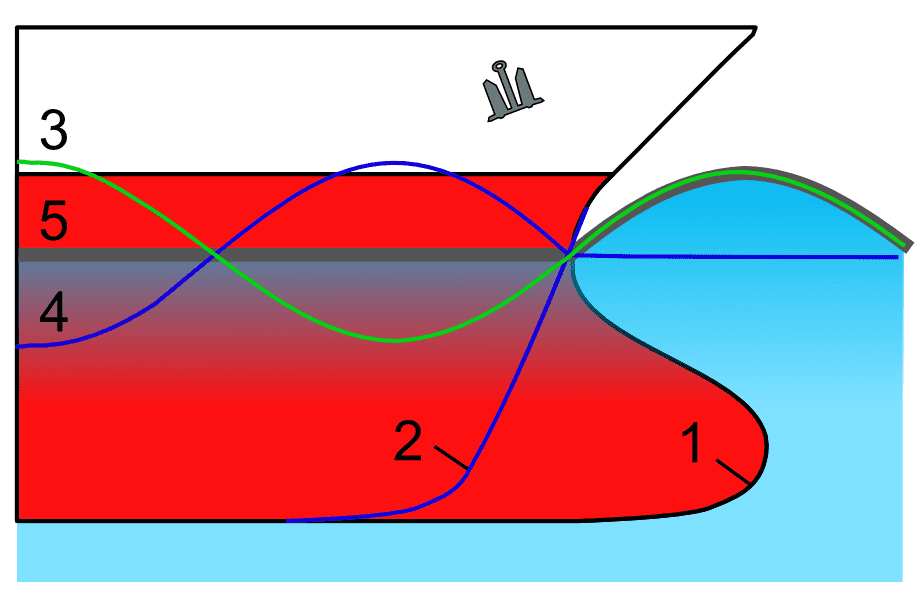If you ever took a walk around the harbour, you would notice that some ships have their noses slightly out of the water. This happens because they unloaded their cargo or got rid of some ballast water to come to the shallow harbour. You will also notice that underwater these ships have bulbous round noses, technically called bulbous bows. What are they for?
When a ship is sailing across the sea, these almost ball-shaped noses remain underwater. They rise up only when the ship is light – for example, after it got rid of its cargo or ballast water. Not all ships have bulbous bows, but they are very common, especially among large fishing, cargo and cruise ships.

These bulbous noses are designed to reduce water resistance and improve the efficiency or speed of the ship. It is estimated that a bulbous bow can reduce fuel consumption by as much as 12-15%. However, they are only effective on larger ships, which are dealing with a lot of water resistance. This is why you don’t see bulbous bows on small fishing and recreational boats.
A round shape is sleeker than a blocky one – that’s pretty obvious. However, such a protruding bulbous bow on a ship really looks strange, because even ships that don’t have it have pretty sleek hulls. The point of a bulbous nose on a ship is that it smooths the water flow around the hull.

Sailing through your own wake is much more difficult thanks to wave resistance. These little waves usually form alongside the hull and ripple along the entire length of the ship. This means that a ship needs to spend more power – and more fuel – to travel through its own self-made waves. But how can you prevent them from forming? Well, that’s the job of that protruding bulbous nose.
A bulbous bow sort of lifts the water ahead of the vertical surface of the hull. It creates a wave which is opposite in phase to the wave in front of a conventional bow. The opposing waves smooth each other out and the flow of water around the hull becomes much smoother. Hence, the water resistance is significantly lower thanks to the bulbous bow.

It is believed that the first ship with a bulbous bow was USS Delaware, which started sailing in 1910. Naval architect David W. Taylor is credited with the invention of the bulbous bow. Various shapes have been explored with computer simulations and physical experiments. And now the bulbous bow can have quite a complex shape. But its function remains the same – just like noise-cancelling headphones, bulbous bows create a wave, which is an opposite to the undesirable wave.




